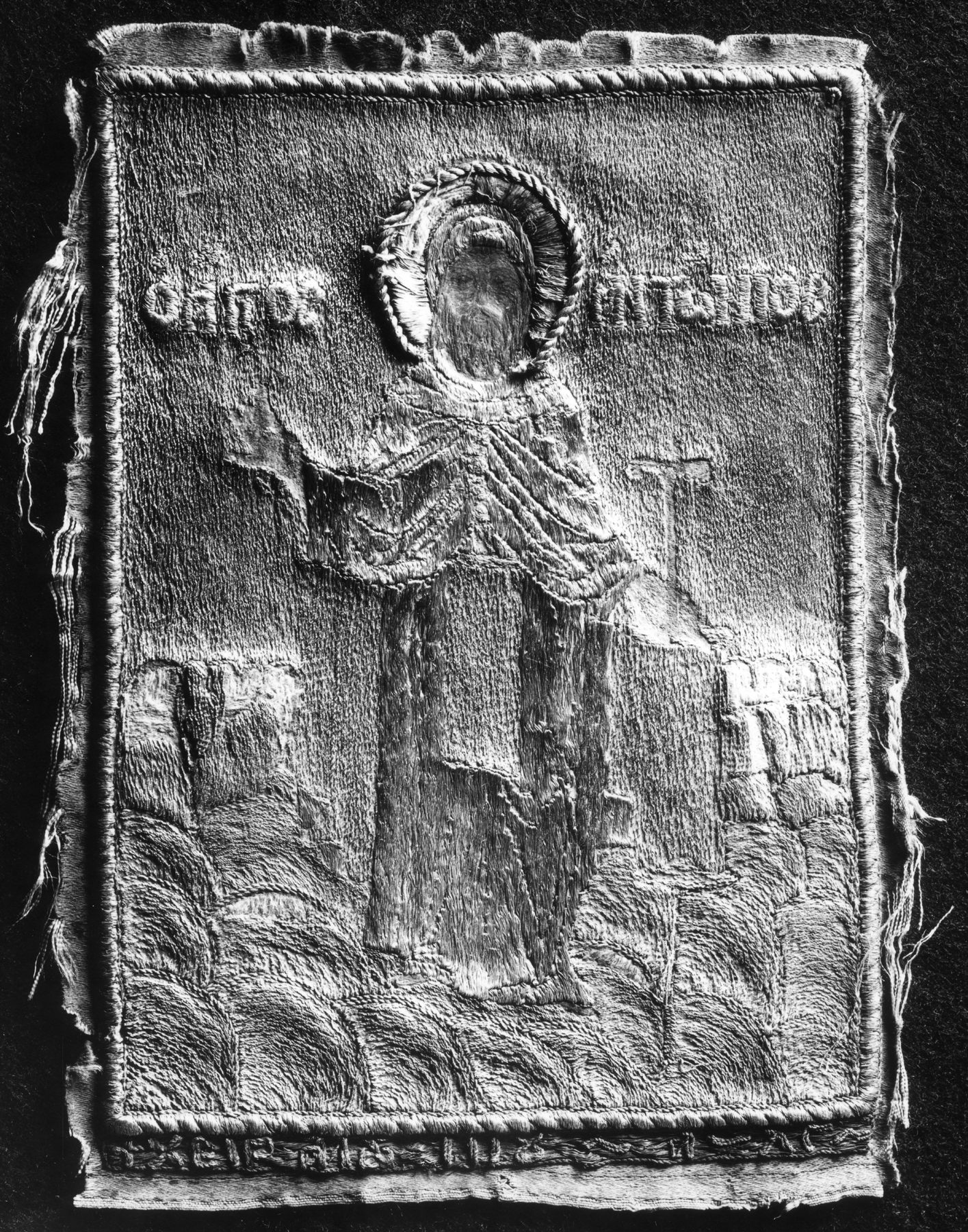St. Anthony of Egypt
1733 (Early Modern)
silver threads, silk
(Byzantium and Early Russia)
(Byzantium and Early Russia)
This embroidered icon, similar to Walters 83.332, represents St. Antony the Great (d. 356), the founder of Egyptian monasticism.
Inscription
Provenance
Provenance (from the French provenir, 'to come from/forth') is the chronology of the ownership, custody, or location of a historical object. Learn more about provenance at the Walters.
Provenance (from the French provenir, 'to come from/forth') is the chronology of the ownership, custody, or location of a historical object. Learn more about provenance at the Walters.
Henry Walters, Baltimore, [date of acquisition unknown] by purchase; Walters Art Museum, 1931, by bequest.
Exhibitions
| 1947 | Early Christian and Byzantine Art. Baltimore Museum of Art, Baltimore. |
Geographies
Greece (Place of Origin)
Measurements
H: 1/16 x W: 1/16 in. (0.16 x 0.16 cm)
Credit Line
Acquired by Henry Walters
Location in Museum
Not on view
Accession Number
In libraries, galleries, museums, and archives, an accession number is a unique identifier assigned to each object in the collection.
In libraries, galleries, museums, and archives, an accession number is a unique identifier assigned to each object in the collection.
83.431



